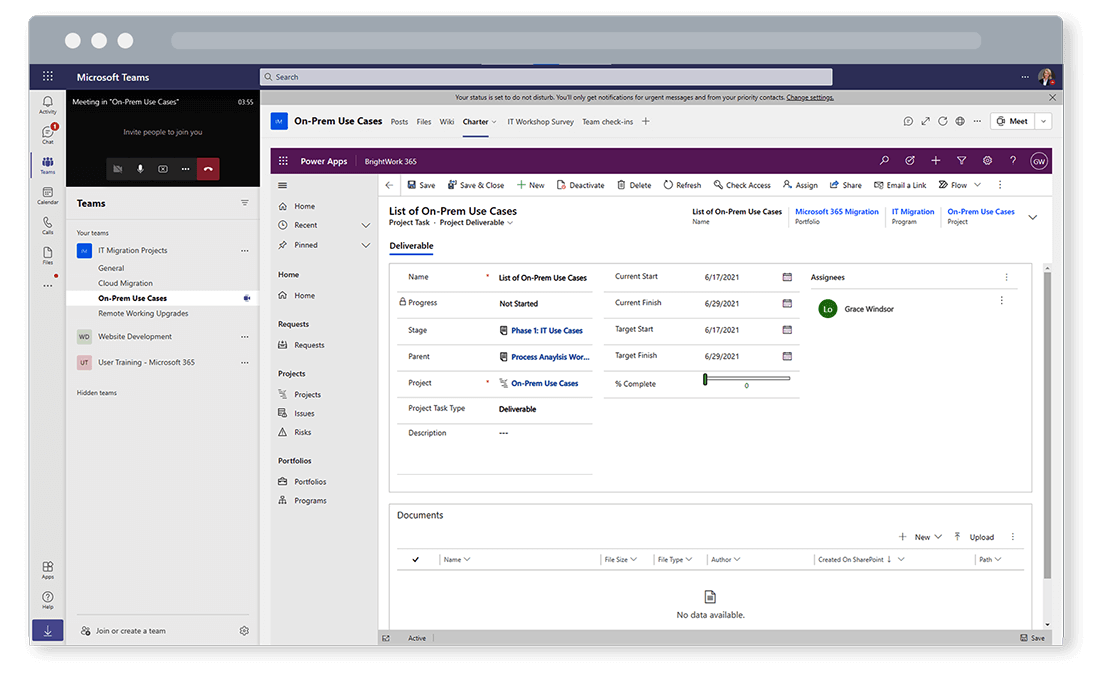Remote teams need a few tools to deliver projects successfully: task tracking, document management, and one place to communicate.
Easily manage remote projects with a free, pre-planned SharePoint template
With these elements in place, it’s easier for remote teams to stay aligned, be productive, and collaborate.
In this article, we’ll look at 3 ways to use Microsoft 365 for remote project teams.
We’ll start with task management for individuals and teams with To-Do, Planner, Lists, and Tasks for Teams.
Next, we’ll review three apps for collaboration and content-sharing: Teams, Sway, and Stream.
When working from home, we often forget to take regular breaks and find it hard to switch off during our free time. We’ll take a look at with MyAnalytics, an app to help you improve productivity and well-being.
We’ll finish the article with a review of BrightWork 365, a project and portfolio management solution for Microsoft 365.
3 Ways to Use Microsoft 365 for Remote Projects
Personal and Team Task Management
Collaboration and Content-Sharing
Productivity and wellbeing
Managing Projects with BrightWork 365 for Microsoft 365
Personal and Team Task Management
It’s fair to say that there is no shortage of ways to manage tasks in Microsoft 365. The challenge is picking the right option for the job!
Microsoft is working towards a unified vision for tasks in Microsoft 365, based on three principles:
- Coherence: Task management will have a consistent experience across the Microsoft 365 ecosystem.
- Intelligence: Users can leverage intelligent services like the Microsoft 365 Graph or MyAnalytics to manage and prioritize work.
- Integration: Tasks are connected to one of two task-management apps – To Do or Planner. Tasks for Teams allows users to access both apps in one place.
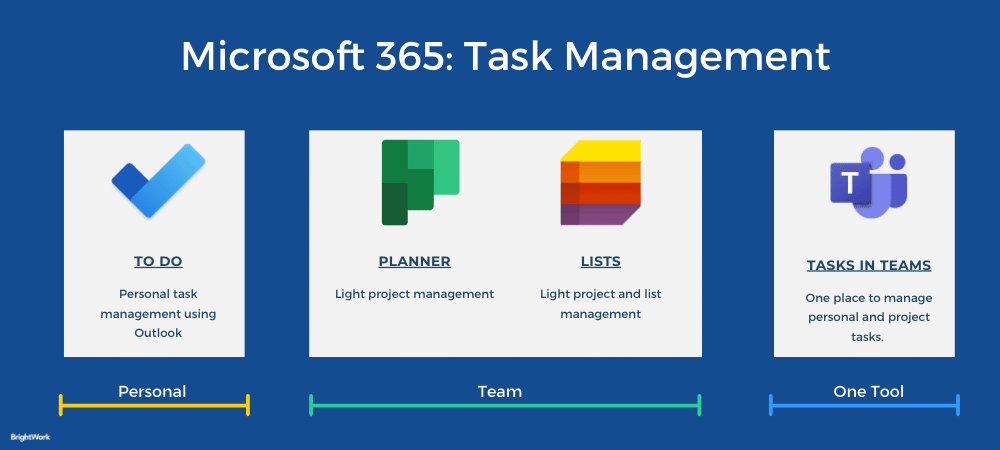
Before we take a look at Microsoft 365 applications for task management, it’s worth noting:
- The applications are cloud-based and work across various devices. This ensures remote team members can stay on track at all times with access to up-to-date information.
- You can easily combine these applications with Power Automate workflow templates to save more time.
Personal: To Do
Part of Microsoft 365, To Do is aimed at individual task management, both personal and professional.
The app, which replaces Wunderlist, is free and syncs across iPhone, Android, Windows 10, and the web.
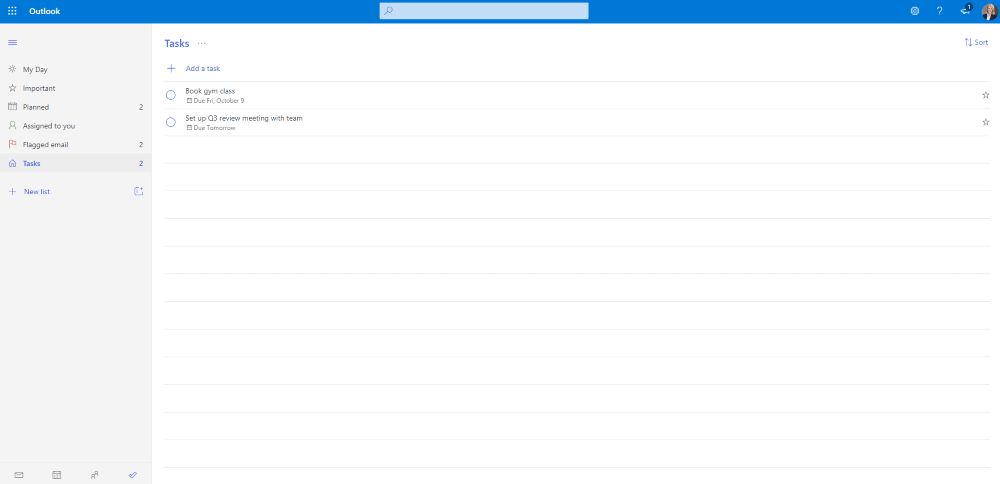
A cloud-based app, To Do allows users to:
- Use lists and groups to manage tasks, for example, project work or weekend plans.
- Prioritize important tasks using the ‘My Day’ view.
- Check tasks assigned in To Do or Planner.
- Convert a flagged email into a task.
Note: To Do replaces Outlook tasks for Microsoft 365 users. Task management for the desktop version of Outlook remains as is.
Team: Planner
Microsoft Planner is a visual task management application, built on Office 365 groups.

Using Planner, teams can plan and manage tasks as Kanban Boards with information on:
- The task owner.
- The task description.
- Start and the due date.
- Status (Not started, In progress, Complete).
- Priority (low, medium, urgent).
- Label (useful for filtering).
- A checklist, a means to decompose a task into smaller steps.
- Add attachments.
- Commenting.
Boards are grouped by bucket, for example, project phase, workstream, or status.
Once tasks are created, users can manage work in a few different ways:
- View tasks as boards or as a calendar (schedule).
- Drag and drop a task into different buckets as work progresses.
- Use the ‘filter’ option to view tasks by due date or label.
- Change the ‘group by’ view from ‘bucket’ to assigned to, progress, due date, or labels.
- Work in Microsoft Teams by adding Planner as a tab to the relevant channel.
Planner makes it easy for your team to find, do, and update their work in one place.
Each plan is like a roadmap for a project, helping your team to quickly understand progress and how their tasks fit into the big picture. With this information to hand, remote team members can work independently and stay on track.
Planner is very intuitive and requires little end-user training. The application is ideal for light projects and individual task management.
However, the application lacks key functionality such as subtasks, dependencies, and cross-project reporting.
Team: Microsoft Lists
Lists is a recent addition to the Microsoft task management ecosystem.
Lists is a stand-alone application and extend SharePoint lists. The application can be used in Microsoft 365, SharePoint Online, and as a tab in Teams.

Start a new list from scratch, import a table from an existing Excel file, or use a ready-made template. In the above screenshot, I have created a list using the ‘Work Progress Tracker’ template.
There are four main views for Lists: Grid, List, Gallery, and Calendar.
Users can configure and customize lists with various options such as conditional formatting, if/then steps, add or remove columns, rules, and views.
One Tool: Tasks for Teams
Getting to grips with different task management options has become much easier with the recent rollout of Tasks for Teams.
This feature brings tasks from To Do and Planner together, allowing users to manage their tasks in one place – Microsoft Teams.

Tasks are grouped as My Tasks (To Do, Outlook, and tasks assigned to you in Planner) and Shared plans (Planner plans).
The Lists view allows users to edit and update tasks in bulk, a feature not available in To Do or Planner.
Collaboration and Content-Sharing
Microsoft Teams
From real-time chat to video meetings, document management, and more, Microsoft Teams is built for remote project management.
Teams is made up of:
- Individual teams, a collection of people, conversations, and files, for example, a project.
- Channels within a team. These are typically focused on a particular topic within a project.
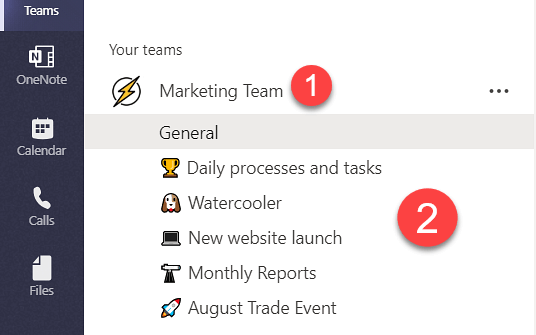
Think of Teams as a hub for collaboration, tasks, and documents with features such as:
- Real-time chat and messaging
- Video conferencing and meetings for up to 300 people
- Live events for up to 20,000 people
- Document storage
- Real-time co-editing
- Search
- Whiteboards
- Public or private channels
- Robust security and privacy capabilities.
From daily stand-ups to planning meetings, feedback sessions, induction, and so on, Teams facilitates individual, group, and one-to-one work.
Teams is also ideal for asynchronous communication, which allows individuals to read and reply to messages in their own time (and time zone).
Removing the need to reply instantly reduces disruptions and creates an opportunity for everyone to get involved.
Here are three easy ways to use Teams for asynchronous communication:
- Keep important communication open and accessible with group Chats. Use one-to-one chats for individual or sensitive discussions.
- Replace weekly status meetings with a weekly update in Chat. Ask team members to post a short update about completed and updated work, and any blockers they need help with.
- Organize communication by topic or project area using Channels. This helps everyone to find information quickly.
As you’ll see below, combining Teams with Sway and Stream creates more opportunities to keep your team informed and engaged.
Sway
Microsoft Sway is a free content creation tool for building and sharing newsletters, presentations, reports, and more!
|
Unlike PowerPoint, Sway leverages interactive content to tell rich stories – without the need for a presenter.
This makes Sway ideal for sharing important content with remote teams.
Creating a Sway is pretty straightforward: use a template, upload a document, or build from scratch.
You can also import and use content from numerous sources like OneDrive, OneNote, and YouTube.
The editing canvas, Timeline, is a drag and drop interface with numerous design options and links to royalty-free images.
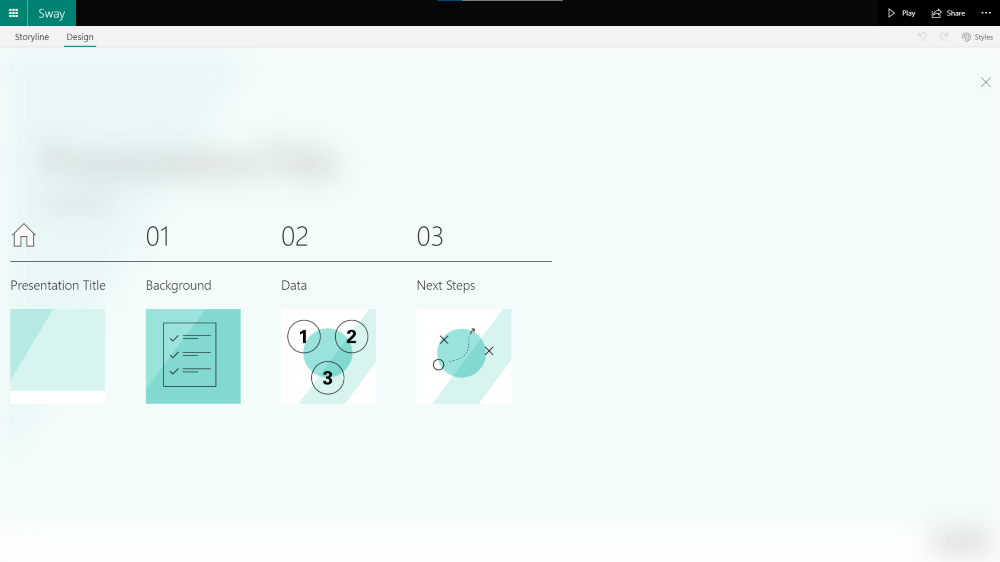
Sways are optimized for mobile and accessibility guidelines, making it easy to engage teams on the go.
Choose from three layout options: Vertical (similar to a webpage), Horizontal, or Slideshow.
Keep your audience engaged with a form – great for polls and feedback.
Whilst Sway does not integrate directly with Teams, you can add a link to the sway as a tab in the relevant team.
Stream
Microsoft Stream is a video platform for creating and sharing videos and is used to record video meetings in Teams.
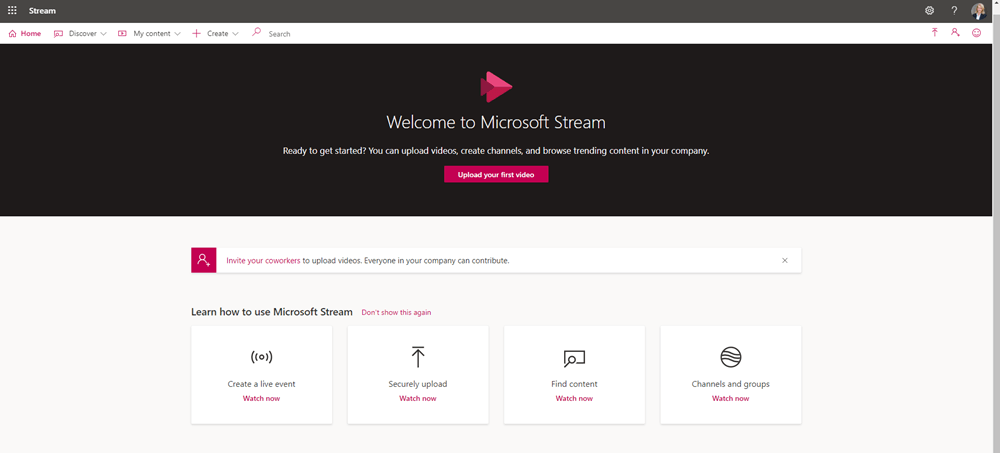
Recognizing the growing importance of video to employee engagement, Stream will become the default video platform for Microsoft 365 in the coming months.
This migration will deliver a consistent experience for navigation, permissions, and governance, and move file storage to OneDrive and SharePoint.
Stream videos will be treated as any other file in Office, helping users to easily discover, share, and manage videos.
Access is based on Azure Active Directory, keeping your content secure.
With Stream, users can:
- Create a company-wide channel and channels for individual teams.
- Customize a channel with company branding.
- Hold live events.
- Upload and share recordings.
- Store and share Teams recordings.
- Add the Stream App to Teams.
From onboarding to company updates, feedback, and knowledge sharing, Stream has multiple use cases for remote teams working across different timezones.
Think YouTube within your organization, a resource anyone can use at any time.
Future updates include transcription, facial detection software, noise suppression, chaptering, analytics, and embedded forms.
So far, we’ve looked at task management for individuals and teams, and how to stay connected with remote team members using engaging content.
With these apps in use, collaboration and communication will be easier, clear, and centralized in one place.
Your team will have access to everything they need to complete tasks and help each other.
Now, it’s time to look at another important area for remote management: well-being. Constant change, working from home, worrying news cycles – these take a toll.
MyAnalytics, Microsoft’s data-driven productivity app, can you help you to manage your time and set work/life boundaries.
Productivity and wellbeing
MyAnalytics
MyAnalytics helps users to understand how they spend their time and who they spend it with.
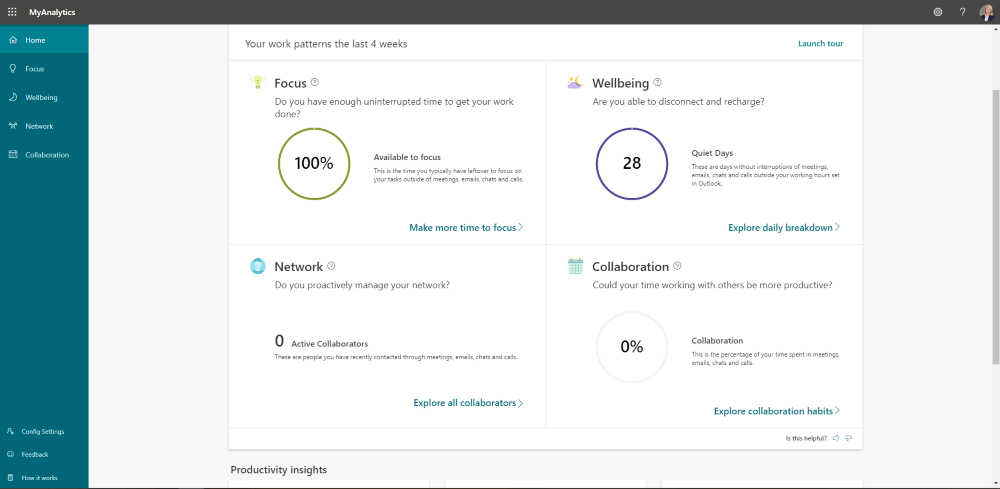
Using AI to track your work patterns – emails, meetings, free time – the application allows users to:
- Find and eliminate distractions.
- Attend the right meetings.
- Automatically set aside ‘focus time’.
- Log off during personal time.
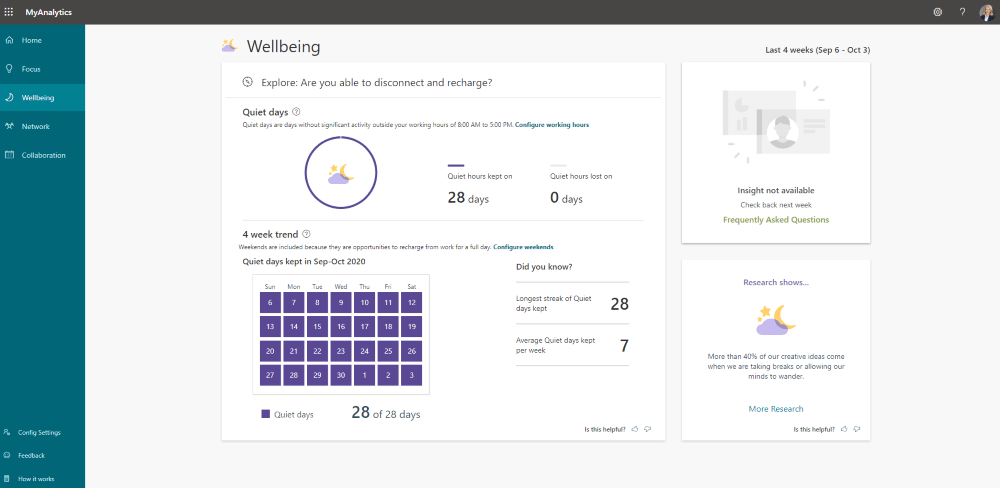
The MyAnalytics dashboard is divided into four sections, each packed with practical tips relevant to that area:
- Focus shows how much uninterrupted time you have each week.
- Wellbeing tracks ‘Quiet Days, days without any major activity outside your working hours.
- Network surfaces information about your network.
- Collaboration shows how much time you spend in meetings, emails, chats, and calls.
With this information, it’s easier to find and improve your weekly calendar, for example, by reducing the number of meetings you attend or setting aside time blocks to tackle emails.
These suggestions are tailored to and accessible by individuals only; the data is not shared with managers or anyone in your team.
You can also work with your team to ensure they have enough time within working hours to complete their tasks and are respectful of each other’s free time.
Access your dashboard via your browser or the Microsoft 365 app launcher.
You can also access insights within Outlook by connecting the two apps.
Depending on your Microsoft 365 subscription, additional features for Outlook (web) include setting an email delivery time and task reminders.
You’ll find more details in this Sway experience from Microsoft.
Managing Projects with BrightWork 365 for Microsoft 365
BrightWork 365 is a project and portfolio management solution, deployed on the Microsoft Power Platform in your Microsoft 365 cloud environment.
BrightWork 365 brings Microsoft 365 apps like Teams, Power BI, and Power Automate into a single collaborative hub, allowing teams to work more flexibly. With project templates, status reports, and portfolio dashboards, senior executives have complete visibility across projects, programs, and portfolios.
As BrightWork 365 is configurable, organizations can combine their processes and ways of working with the Microsoft 365 apps commonly used by their teams.
To book your free custom demo of BrightWork 365, please contact our team.

